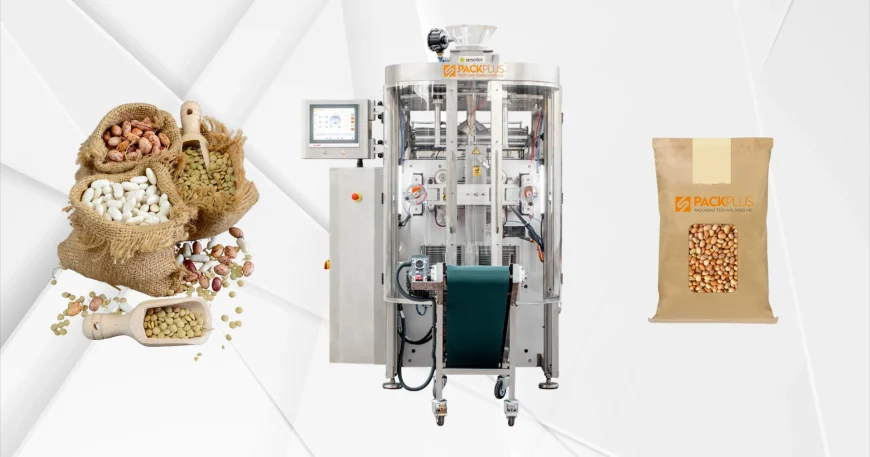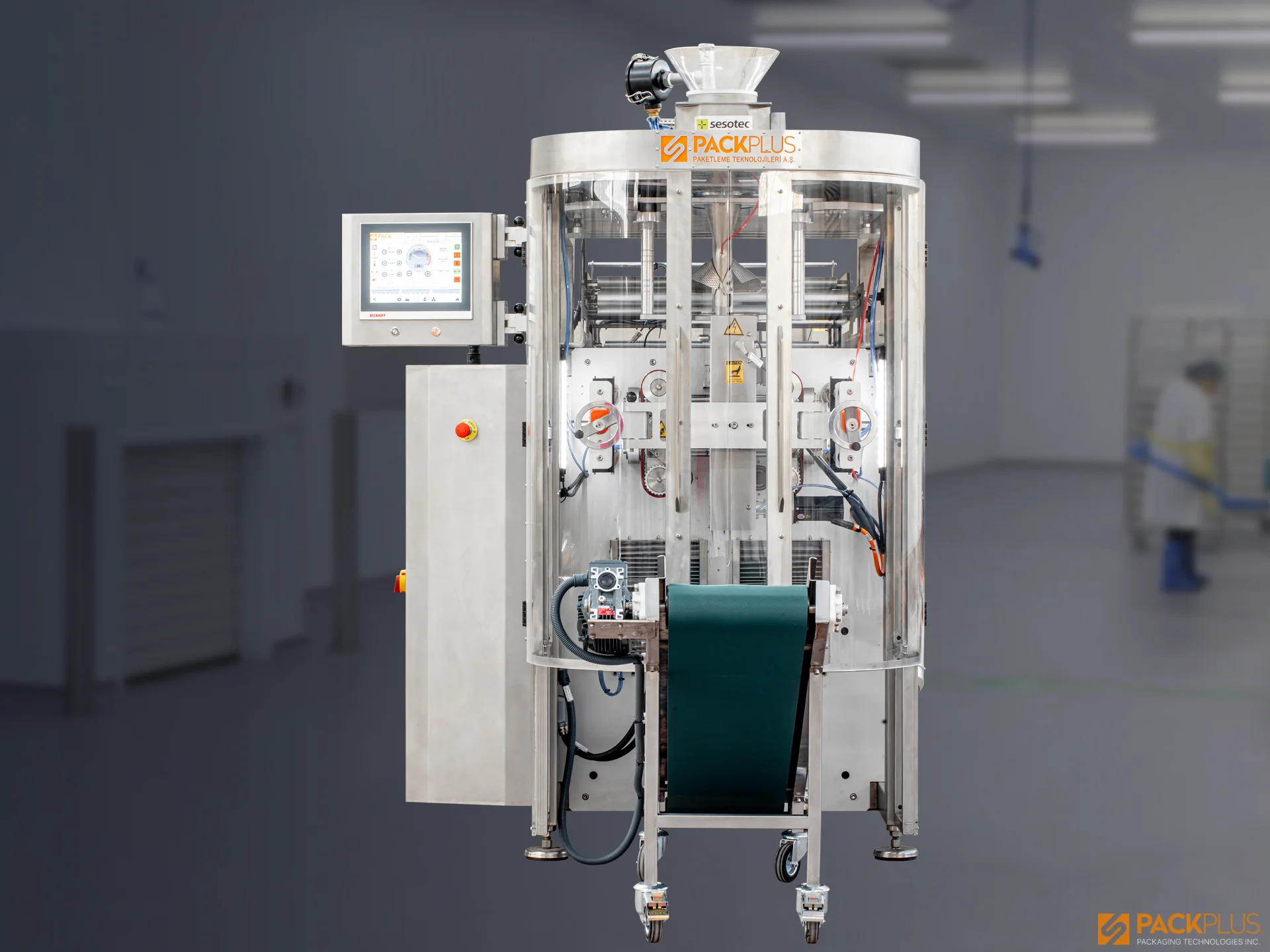Pulses Packaging Machine Solutions
In today’s highly competitive food market, consumers expect reliable, high-quality products delivered promptly and in optimal condition. Pulses—such as lentils, chickpeas, beans, and peas—are staples worldwide, prized for their nutritional content and versatility. Whether they are intended for family meals in the United States and the United Kingdom or shipped in bulk to other countries, these valuable legumes require careful handling to preserve their freshness and quality. One of the most effective ways to achieve this standard is through a well-designed Pulses Packaging Machine. By automating and streamlining the packaging process, businesses can maintain product integrity, increase production efficiency, and ensure consistent results that satisfy global regulations and consumer demands. Investing in a Pulses Packaging Machine represents more than just adding a new piece of equipment to your production line. It is a comprehensive solution that can help manufacturers extend product shelf life, optimize labor costs, and enhance brand reputation.
Fully Automatic Vertical Packaging Machine
Pulses Packaging Machine Key Features
When searching for the ideal packaging system, certain features distinguish a high-quality Pulses Packaging Machine from a less efficient model. One of the primary considerations is precision. Accurate weighing mechanisms prevent overfilling and underfilling, ensuring that each package meets stringent weight requirements while reducing waste. This high level of accuracy often stems from advanced load cells or weighing sensors integrated into the machinery. These sensors quickly calibrate and detect even slight variations, allowing operators to maintain consistent package weights throughout long production runs.
Equally important is the machine’s construction and material quality. Manufacturers producing pulses for markets in the United States or Europe must comply with health and safety regulations that emphasize sanitation. Stainless steel components, for instance, resist corrosion and are easy to clean, minimizing the risk of bacterial contamination. Additionally, protective housings and sealed compartments help keep dust and other debris away from sensitive internal mechanisms. This attention to detail fosters a hygienic environment, which is crucial when handling food products like pulses. Some machines also incorporate intuitive control panels and user-friendly software that simplify setup, operation, and maintenance. These controls enable quick adjustments to packing speed, bag size, and other parameters without requiring complex interventions, making the entire process more efficient and responsive to production demands.
Suitable Packaging Techniques for Different Pulses
Not all pulses have the same physical characteristics. Lentils are generally smaller and more fragile, while chickpeas have a rounder, firmer structure. Similarly, beans can vary widely in shape, size, and moisture content. Because of these differences, a one-size-fits-all approach to packaging can be problematic. A Pulses Packaging Machine tailored to each specific legume type offers the flexibility needed to handle diverse products without compromising quality. In particular, adjustable speed settings and adaptable sealing mechanisms ensure that delicate lentils remain intact, while sturdier pulses like chickpeas or kidney beans are securely sealed without damage.
Moreover, different markets may have specific packaging preferences or standards. In the U.S., resealable stand-up pouches are increasingly popular, as they provide convenience for consumers who want to store products easily after opening. Meanwhile, in Europe or other global markets, traditional pillow bags or vacuum-sealed packs might be more common, depending on local consumer behavior. A versatile Pulses Packaging Machine can accommodate multiple bag types and sizes, enabling businesses to adapt their packaging lines to specific customer demands and regional requirements. Such adaptability is vital for companies looking to export their products, as it allows them to quickly pivot and tailor their presentation to varied audiences without incurring significant additional costs.
Food Safety and the Importance of Pulses Packaging Machines
Food safety is a paramount concern across all sectors of the food industry. Pulses, often consumed as a protein-rich alternative to meat, must adhere to strict regulations that ensure they are free from contaminants and safe for public consumption. By using a Pulses Packaging Machine, manufacturers minimize direct contact between handlers and the product, drastically reducing the likelihood of contamination. Automated processes ensure that pulses are efficiently transferred from storage silos to packaging units, limiting the number of touchpoints where bacteria or other contaminants might be introduced.
Beyond reducing contamination risk, an automated packaging system also helps maintain product quality over time. Pulses can degrade if exposed to moisture or oxygen for extended periods. Many machines now offer controlled atmosphere packaging, which involves flushing the pack with inert gases to displace oxygen. This approach significantly extends shelf life, retaining the pulses’ taste, texture, and nutritional profile. Considering the competitive nature of international markets, providing pulses that remain fresh and appealing for longer can confer a substantial advantage. Moreover, maintaining consistent product quality fosters consumer trust and supports brand loyalty, especially for businesses seeking to stand out in a crowded marketplace.
Advantages of Pulses Packaging Machine
The decision to incorporate a Pulses Packaging Machine into a production line brings a multitude of benefits that can profoundly impact a business’s bottom line. One primary advantage is increased production efficiency. Manual packaging methods not only risk human error but also limit the number of bags that can be processed in a given timeframe. By contrast, an automated machine can handle a significantly larger volume within the same period, boosting throughput and providing a faster return on investment. This enhanced production capacity also helps businesses meet sudden increases in demand, such as seasonal spikes or growing international orders, without sacrificing quality.
Furthermore, consistent packaging quality across every bag can bolster a company’s brand image. Customers are more likely to trust products that appear uniform and professionally sealed, which is much easier to achieve through an automated process. The reduced reliance on manual labor also promotes a safer work environment, as employees spend less time performing repetitive tasks that could lead to injuries. Instead, they can focus on higher-level duties, like quality control or facility management. Overall, modern packaging solutions deliver improved productivity, better product presentation, and a streamlined workflow—key ingredients for succeeding in dynamic and fast-paced global markets.
Pulses Packaging Machine Price and Return on Investment
While a Pulses Packaging Machine may represent a considerable upfront expense, the long-term savings and benefits typically justify the cost. For starters, automated systems minimize product overfill, which can add up to substantial savings over time. Each gram of pulses is accounted for accurately, eliminating the consistent loss that often occurs in manual packaging lines. Reducing these inefficiencies translates to better profit margins, helping to offset the machine’s initial purchase price.
Moreover, businesses that implement an automated packaging system frequently witness a drop in labor costs. Although skilled operators remain essential, the overall size of the workforce dedicated to packaging can be reduced, or those employees can be reassigned to more specialized, value-added tasks. In addition, many of the top Pulses Packaging Machine manufacturers provide ongoing technical support and maintenance plans, ensuring minimal downtime and maximizing productivity. Consequently, the payback period can be relatively short, especially for operations with substantial daily output. When factoring in reduced labor expenses, minimized wastage, and the enhanced capacity to serve a broader customer base, the decision to invest in a high-quality packaging system often proves financially astute.
Choosing the Right Pulses Packaging Machine
Selecting the ideal packaging equipment requires a careful evaluation of specific production needs. For example, if a company specializes in bulk shipments of beans or chickpeas, it might prioritize a high-capacity Pulses Packaging Machine that can quickly fill large bags. On the other hand, a firm focusing on premium retail packs for health-conscious consumers might emphasize precision weighing systems and the ability to handle various bag types with attractive branding. It is also crucial to assess the level of automation required. Fully automated machines generally offer the most efficiency but can be more expensive, while semi-automatic machines may suffice for smaller-scale operations, striking a balance between cost and productivity.
Another critical consideration is the machine’s compatibility with different packaging materials. From biodegradable films to high-barrier laminates, various bag options exist to suit diverse market preferences and environmental considerations. Ensuring that the machine can adapt to evolving packaging trends or regulations is a forward-thinking approach. Additionally, reliable technical support from the manufacturer can be invaluable, particularly if the business plans to upgrade or reconfigure the line in the future. By aligning machine capabilities with the company’s objectives, it is possible to optimize the investment and keep pace with market changes.
Grow Your Business: Industrial and Small Scale Solutions
A versatile Pulses Packaging Machine should cater to both large-scale industrial operations and smaller enterprises. Large manufacturers frequently need machinery that runs continuously, handling massive quantities of lentils, chickpeas, and other pulses every hour. Such machines often come equipped with cutting-edge automation and robust construction to withstand the rigors of 24/7 operation. They may also feature sophisticated control systems that monitor production metrics in real time, generating detailed reports on efficiency, downtime, and throughput. These insights allow managers to make data-driven decisions that further refine the packaging process and improve overall performance.
In contrast, small or mid-sized companies may not need the same level of output. Their success might hinge on flexibility, ease of use, and scalability as they grow. For these businesses, a semi-automatic Pulses Packaging Machine that can adapt to multiple bag sizes or styles could be the ideal compromise between cost and functionality. While it may not reach the speed of industrial-grade equipment, it still provides a significant boost over purely manual methods. As demand for their products increases, owners of smaller machines can often upgrade components or integrate additional modules instead of replacing the entire system. This step-by-step approach to scaling can be less financially risky, ensuring that every stage of investment is aligned with actual business needs.
Efficiency with Automation: Innovations in the Pulses Packaging Process
The global push toward automation has ushered in a wave of new technologies that redefine efficiency in the pulses sector. Many advanced Pulses Packaging Machine models now leverage sensors, programmable logic controllers (PLCs), and even artificial intelligence to fine-tune operations. These smart systems monitor filling accuracy, detect anomalies in bag placement, and adjust speeds automatically, maintaining optimal throughput without compromising quality. Beyond speed, such innovations help preserve product integrity by reducing the mechanical stress placed on delicate or irregularly shaped pulses.
Moreover, predictive maintenance capabilities have gained significant traction. Rather than waiting for a critical part to fail, modern machines can alert operators when certain components—like belts or seal jaws—begin to show signs of wear. This proactive maintenance strategy helps prevent unexpected downtime and lost production. Furthermore, remote monitoring tools allow technicians to diagnose and troubleshoot issues from off-site locations, accelerating repair times and minimizing disruptions. For businesses aiming to remain competitive in markets like the U.S. and UK, where consumer preferences shift rapidly, the agility that comes from high-tech, automated systems can be a deciding factor in long-term success. By embracing these innovations, companies not only keep pace with current demand but also position themselves to adapt quickly to future challenges and opportunities in the dynamic pulses market.
Conclusion
The packaging process is a critical component of any pulses supply chain, influencing everything from product safety and shelf life to operational costs and consumer perception. A modern Pulses Packaging Machine can serve as the backbone of your production line, whether you are running an industrial-scale facility serving global markets or a growing small business expanding into new territories. By focusing on key features like construction quality, weighing accuracy, and automation capabilities, you can secure a reliable system that meets the needs of both present and future demand.





